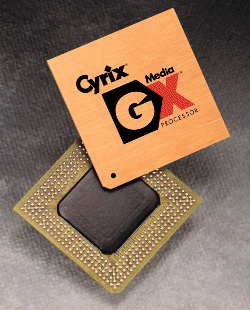 |
|
|
|
In the Forums... |
Posted: February 26, 2001 Written by: Dustin "TimmyC" Jones Cyrix Although Cyrix has been in the CPU business for a fair amount of time, its processors have been less than stellar as of late. Crippled by a fast paced market, Cyrix - which is now owned by VIA, and previously owned by IBM, then being known as National Semiconductor - has released processors which are consistently slower than anything released by the ‘big two’. Cyrix’s first attempt into the retail market was with the Cx486DX and DX4. These processors were actually quite fast, beating Intel's chips in many scenarios. Later, Cyrix released the DX4 model, which would yield higher speeds by tripling the bus clock speed of 33MHz. 1995: The next release from Cyrix was in the form of its 5x86. This was actually quite a good processor, it came in 100, 120, and 133MHz speeds and it was pretty impressive -- it even came with its own heatsink attached.  This was probably Cyrix's prime. 1996: After two good releases, Cyrix was on its high horse and was very ambitious on its new project, the 6x86, or "M1" (and later revised and renamed MII). This was hyped to be a great processor, to beat the likes of any Intel or AMD processor. These were high aspirations though, as it was pummelled after release time by the competition. The M1 was only a mediocre processor, with some nice features like MMX support, and decent clock speeds of 120 to 200MHz. Cyrix later released an MX version of the 6x86 which added more L1 cache and a few other changes, but it wasn't enough.  A 200+? No, it was actually a 150 MHz chip. 1998: You have to give Cyrix some credit, though. It was very creative in its ideas, and made value a prime concern. Shortly after the 6x86MX, it released a very interesting attempt at an ‘all in one’ processor. When I say all in one, I mean it. Cyrix tried to integrate sound, video, PCI, and memory controllers into the processor, having it perform all the functions on the CPU. While this was a very cool idea, there’s no way that a 200MHz processor could efficiently perform all these tasks. While a good idea, that’s all it was.  The ill-fated MediaGX. |
||
|
| |||
|---|---|---|---|